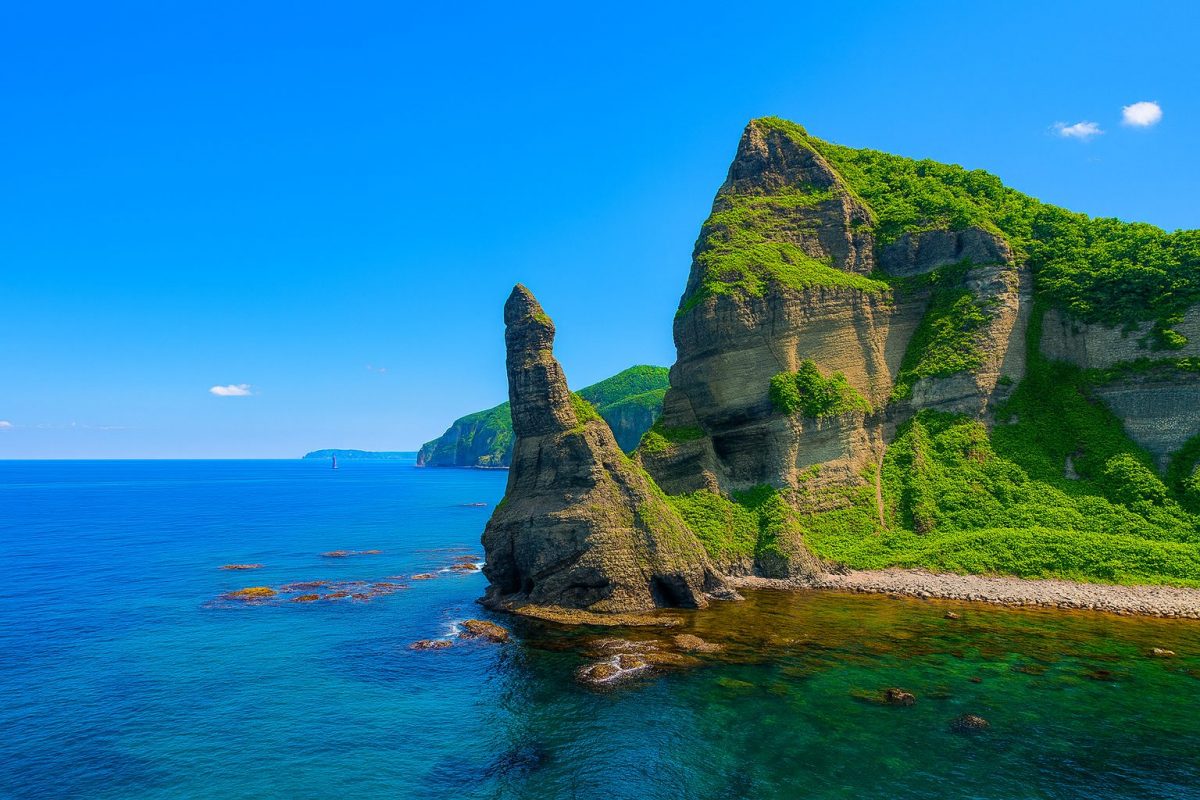| population | 2,519 peoples |
|---|---|
| area | 188.36 km² |
| population density | 13.4 peoples/km² |
Located in the northeastern part of the Shakotan Peninsula, Furubira Town is the only municipality of the Furubira District under the Shiribeshi Subprefecture of Hokkaido.
The town’s name comes from the Ainu words hure-pira or hur-pira, meaning “red cliff,” referring to the vivid coastal cliffs that line its rugged shoreline.
Historically, Furubira prospered from herring fishing, and its central Furubira River still flows through the heart of town toward the Sea of Japan, where the main districts of Hamamachi and Honmachi form a natural harbor that became a thriving port.
The area remains deeply influenced by Ainu culture and its spiritual respect for nature. Visitors will find a community that balances the sea and the mountains, where fishing, seafood processing, and local festivals define the rhythm of life.
With its seasonal festivals, rich marine products, and scenic landscapes, Furubira offers travelers an intimate glimpse of traditional Hokkaido life – calm, authentic, and close to nature.
Culture & Traditions
Furubira’s culture is shaped by centuries of coexistence between people and the sea, interwoven with Ainu traditions that honor natural spirits.
During the Edo period, Furubira was established as a fishing base, and later, in the Meiji era, it became the administrative hub for the eastern Shakotan area with the presence of the Kaitakushi (Development Commission) office.
Fishing remains central to daily life: cod roe (*tarako*), scallops, sea urchins, and flounder are landed at Furubira Port, while the processing of cod roe has grown into a major local industry. Visitors can enjoy freshly caught seafood or purchase delicacies at direct-sale markets run by the local fisheries cooperative.
The town also celebrates its literary heritage. Several monuments commemorate the poet Kazuo Yoshida, whose works capture the beauty and melancholy of the northern seas.
At Zenko-ji Temple, painter Takeji Hayashi spent two decades creating the renowned oil painting series “Five Hundred Arhats,” which remains a cultural treasure.
Furubira’s annual festivals express the town’s identity and spirituality. The Kotohira Shrine Festival (summer) and the Ebisu Shrine Festival (autumn) both feature a dramatic purification ritual known as the “Fire Crossing,” where a performer dressed as the deity Sarutahiko – wearing a tengu mask – walks barefoot through flames to ward off misfortune.
These sacred events embody the deep connection between ancient Ainu beliefs and modern Shinto traditions that still pulse through the community.
Local Specialties
- Furubira Tarako (Cod Roe): The town’s signature product made from fresh pollock eggs, carefully seasoned and processed. The Furubira Tarako Museum offers tastings and direct sales.
- Hokki Miso: A local specialty miso featuring surf clams simmered in a savory-sweet sauce. A traditional fisherman’s dish enjoyed with rice or sake.
- Scallops from Furubira Bay: Thick and sweet scallops harvested from nearby waters, often served as sashimi or grilled with butter at local eateries.
- Furubira Soybeans: Grown in cool Hokkaido air and rich soil, these soybeans are prized for their fragrance and are used in locally made tofu and miso.
- Natural Sea Salt: Handcrafted from Furubira’s pristine seawater using traditional wood-fired evaporation. Rich in minerals and widely used in local cuisine.
Annual Events
- Kotohira Shrine Summer Festival: Held in mid-July, this is Furubira’s largest festival. It features portable shrines, music, and the famous “Fire Crossing” ritual performed by the Tengu-clad Sarutahiko deity.
- Ebisu Shrine Autumn Festival: Dedicated to the god of fishing and prosperity, this autumn event includes a sea parade and community celebrations wishing for safety and abundance.
- Taratsuri Folk Song Festival: A national competition celebrating the “Taratsuri-bushi,” one of Hokkaido’s five great folk songs, born in Furubira. Singers from all over Japan gather for this cultural showcase.
- Fishermen’s Cooperative Festival: A summer event held near the Furubira Fishing Port with fresh seafood markets, grill corners, and family-friendly activities.
- Tengu Fire-Walking Ceremony: A spiritual ritual at local shrines, where a masked performer walks through fire for purification and good fortune – a thrilling sight unique to Furubira.
Access
- By Car: Approximately 2.5 hours from Sapporo via Route 5 and Route 229 through Otaru and Yoichi. The coastal “Otaru–Shakotan Scenic Road” offers stunning sea views.
- By Bus: Take the Hokkaido Chuo Bus “Express Shakotan-go” from Sapporo Station to Furubira Bus Stop (approx. 3 hours via Otaru and Yoichi).
- By Train: The nearest JR station is Yoichi Station on the Hakodate Main Line. Local buses connect Yoichi to Furubira in about 40 minutes.
- By Air: From New Chitose Airport, the drive takes around 2.5 hours using the Dōō Expressway and Route 231.
Tourist Attractions
- Seta Kamuy Rock – A sacred rock whose name means “Dog God” in Ainu. It is tied to local myths and even legends of Minamoto no Yoritomo. The site was depicted in Hasui Kawase’s 1933 woodblock print “Seta Kamuy Rock.”
- Kannon Falls – A 15-meter waterfall located along the Doro-no-ki River, a tributary of the Furubira River. A beautiful spot during spring greenery and autumn foliage.
- Furubira Family Village Campground – A scenic outdoor area with cabins, campgrounds, and river access. Ideal for barbecues and family outings during summer.
- Furubira Tarako Museum – A roadside station dedicated to the town’s signature cod roe. Offers exhibits, tastings, and local product sales.
- Kotohira Shrine – The town’s main shrine. Its annual summer festival features the fire-walking ceremony that has become symbolic of Furubira’s spiritual heritage.
- Furubira Cultural Center – Home to several literary monuments, including those dedicated to poet Kazuo Yoshida and writer Yuyuko Mizumi. A cultural landmark in the heart of town.
- Zenko-ji Temple – A historic temple housing Takeji Hayashi’s “Five Hundred Arhats” oil paintings. A rare and nationally recognized artistic achievement.
